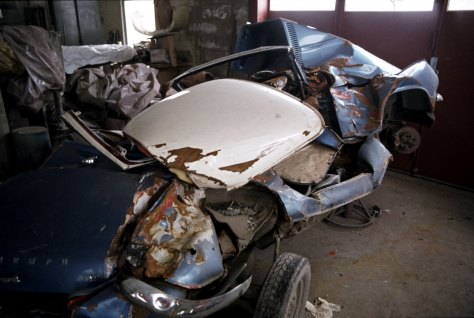
Many of the choices we make through life can be changed or revoked without very much difficulty, but some ought to be thoroughly thought through before they are made. One of the more difficult of these would be the choice of a life partner or spouse – a choice that can be a great blessing or devastating for the rest of your life.
Today, June 19, LaVonne and I are celebrating 35 years of marriage. 35 years! It’s unbelievable that time has passed so quickly. When we were newlyweds we met a couple that had just celebrated their 5th anniversary. WOW! We thought that sounded like a very long time.
In 1979 I was working in California and renting a few rooms in the house of a Swedish woman. One day, when I came home, she said that we were invited for dinner at the home of her friend who was also from Sweden. That sounded nice so I accompanied her to dinner. Of course I couldn’t imagine that May-Britt, the Swedish woman who had invited us, would soon be my mother-in-law. We drove to the house in Arcadia, about an hour from where I was living, and it was here that I first met LaVonne. It wasn’t, perhaps, love at first sight, but it was memorable. I saw LaVonne a few more times before I returned to Sweden in the spring of 1980.
In the spring of 1980 I was filming a documentary about the mission sailboat, Elida, and their orphanage in India. In the summer I was going to film on the boat in Sweden. LaVonne was in Sweden visiting relatives and had, a bit reluctantly, stayed to sail with Elida along the west coast for a week. It happened to be the same week that I was filming onboard the boat. It didn’t take very long before LaVonne was glad that she had stayed behind when her mother went home to the USA. A few days after we left Elida, I invited LaVonne to go with me to Liseberg, an amusement park in Gothenburg. Liseberg can be a dangerous place for a bachelor who wishes to remain single. That’s where it said, “click.”
LaVonne returned to her aunt’s house in Småland where she would stay for a few days before going back to the states. While there she called her mother. LaVonne, who hadn’t spoken many words in Swedish earlier, began babbling in Swedish about this man she had met. May-Britt was surprised and shocked, something BIG had happened.
In 1981 I was again working in California and was able to spend a lot of time with LaVonne and her family. The following winter I was working on Sri Lanka and could only talk to her briefly by telephone. At that time you had to order your call through the post office on Sri Lanka and then wait for a couple hours to be connected. But LaVonne wrote to me every day, making the other members of my team a bit jealous over the amount of letters I received.
The wedding was set for June 19, 1982. I returned to Sweden from Sri Lanka and one week later flew to California. Luckily LaVonne and her mother had made all the plans and everything worked wonderfully. My father and brothers and their wives all came to the wedding. We had over 400 guests and it was a celebration we’ll never forget.
I got an amazingly beautiful, intelligent and loving woman for a wife. It’s now been 35 years and I want to say in all honesty and with all my heart that I love you more now then ever, you, my best friend and wife.









